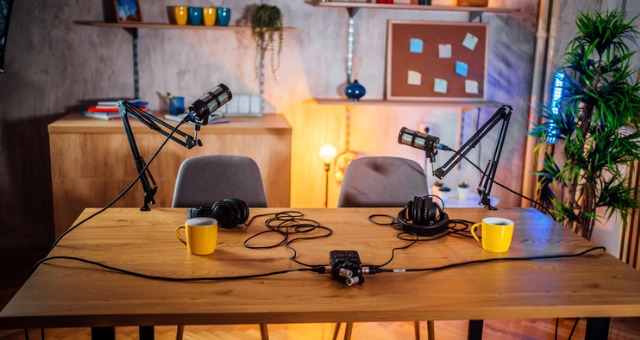
Podcasting feels revolutionary in this digital age. While video and images conquer the Internet and speed shortens our attention span, podcasting feels like a relief in our everyday lives. It doesn’t require our interaction by scrolling, and it allows us to engage in a form of entertainment that we do not have to pay attention to constantly. The longest length of episodes allows us to engage in a more relaxed way. Listening to podcasts is easier and more accessible when we are doing activities that require our attention. During running, driving, or cooking, it provides us with company and entertainment.
It also feels like we go back to basic storytelling. When as children, we used to hear stories and fairytales from our parents, and it was up to us to use our imagination and create another world. The message is produced by the mouth and it is received by our ear, as in ancient times and the beginning of human communication.

The fact that we don’t see an image allows us to actively imagine what the producer tries to communicate to us. The voice of the producer holds a lot of information as it is the means that takes us on that journey. The message is transformed to something more intimate as the other senses are inactive, and we pay more attention to the pauses, the laughter, and the pace that are created.
However, podcasting is not neutral. It favors voices that are calmer, deeper, or intriguing. It is a carefully curated message by the producers that feels effortless. There is a lot of preparation and editing in reaching the final result we receive by our ears. In a way, it creates an illusion as it feels more authentic and personal than it really is.
Podcasting can be used by anyone who has something to share with the world, and it doesn’t require the type of performance that is expected in video formats. It may be the easiest option for academics to connect with the general public and with people who do not want to get the full exposure through videos and images online.


Recent Comments